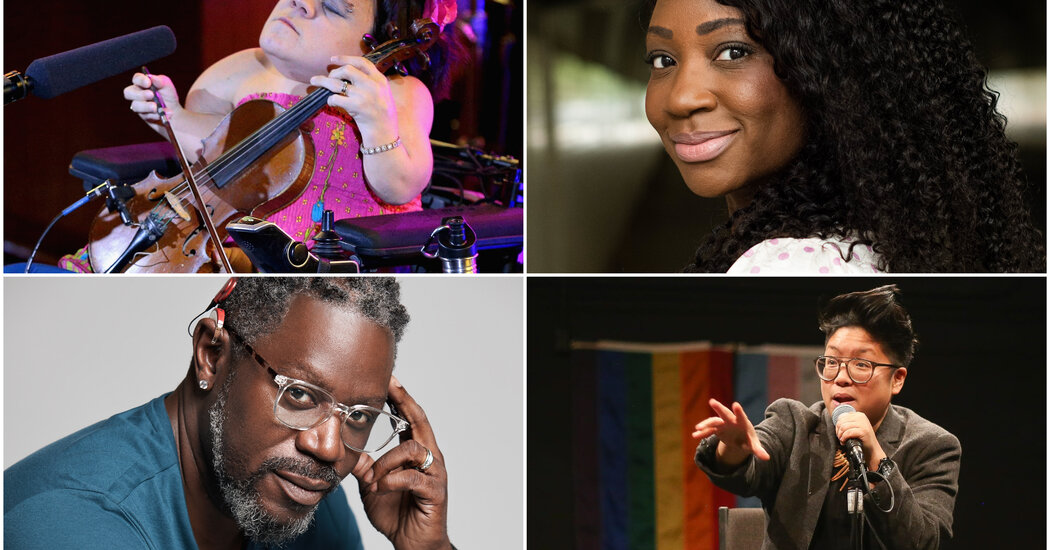Ford and Mellon Foundations Name 2024 Disability Futures Fellows

The Ford and Andrew W. Mellon Foundations on Wednesday named the 2024 Disability Futures Fellows — the latest class of disabled writers, filmmakers, musicians and other creative artists who will receive unrestricted $50,000 awards.
This year’s recipients include Gaelynn Lea, a folk artist and disability rights activist; Natasha Ofili, an actress and writer who in 2020 became one of the first Black deaf actors to portray a video game character — Hailey Cooper — in Marvel’s Spider-Man: Miles Morales; Warren Snipe, a.k.a. Wawa, a deaf rapper and actor who performed in sign language at the 2022 Super Bowl; and Kay Ulanday Barrett, a three-time Pushcart Prize-nominated poet and essayist whose work focuses on queer, transgender people of color.
Lea said she almost missed an email telling her she got the award. “Because the email said, ‘We’re excited to offer you $50,000,’ it went to my spam,” Lea, 40, said in an interview. (She later received a follow-up email.)
“It’s very validating that I’m doing this stuff I really care about, and now it’s being recognized,” added Lea, who won NPR Music’s Tiny Desk Contest in 2016, and composed and performed original music for a Broadway production of “Macbeth” starring Daniel Craig and Ruth Negga. Lea plans to use the award to fund the writing of a memoir to be published next year.
The initiative, which is administered by United States Artists, named its inaugural class of fellows in 2020, with the goal of increasing the visibility of disabled artists and elevating their voices. (About one in four adults in the United States has a disability, according to the Centers for Disease Control and Prevention.) The second class was announced in 2022, and this is the last cohort in the program. The fellowship supports people at all stages of their careers.
Elizabeth Alexander, the president of the Mellon Foundation, said in a statement that the program reflected the foundation’s support of the “work, experiences and visions of disabled artists — both in their individual practices and in the collective power they wield in the arts at large.”
